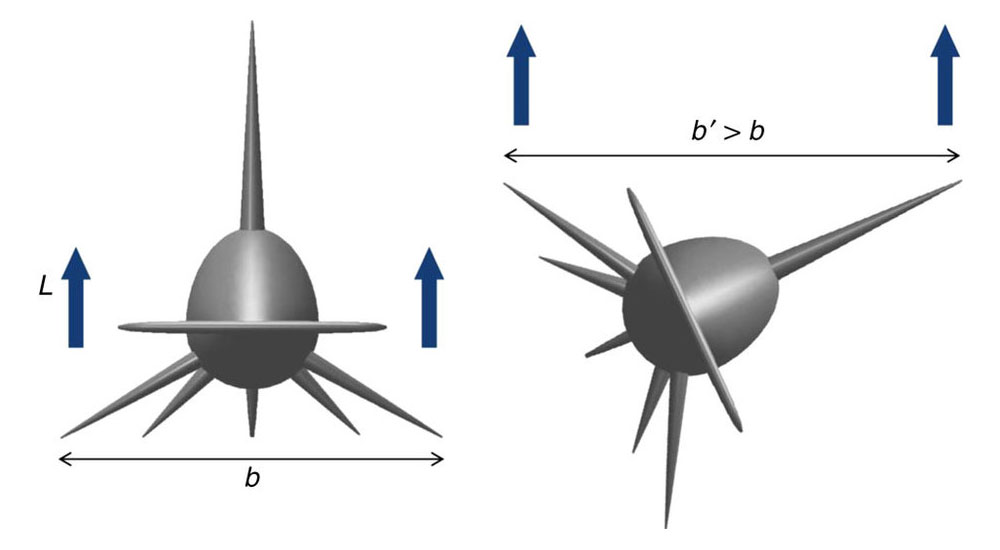Research Abstract
ヒラシュモクザメは移動コストを抑えるために傾いて泳ぐ
Great hammerhead sharks swim on their side to reduce transport costs
2016年7月26日 Nature Communications 7 : 12289 doi: 10.1038/ncomms12289

動物は、移動コストを最小化するために、さまざまな生理学的および行動的戦略を示す。水生動物の鰭は効率的な移動に重要な役割を果たし、サメの場合、背鰭および胸鰭の機能は完全に別物と考えられている。すなわち、背鰭は推進力を支援して、曲がるときに水平方向の流体力学的力を生じ、胸鰭は、垂直方向の力を生じてサメの負の浮力を打ち消すとされている。今回我々は、ヒラシュモクザメが横に傾いて泳ぐことにより巨大な背鰭を利用して揚力を生じ、背鰭と胸鰭の機能を劇的に再構成していることを示す。機器を装着した野生のサメは、50~75°傾いて泳ぐことによって90%もの時間を過ごしており、流体力学モデル実験は、そうすることにより、抵抗、そしてとりもなおさず移動コストが、通常の正立した泳法と比較して約10%抑制されることを明らかにした。そのような独特の目的のためにそうしたきわめて精選された特徴を用いていることは、流体力学的適応への進化経路、ならびに形態および機能に対する我々の認識に関して、興味深い問題を提起する。
Corresponding Author
Animals exhibit various physiological and behavioural strategies for minimizing travel costs. Fins of aquatic animals play key roles in efficient travel and, for sharks, the functions of dorsal and pectoral fins are considered well divided: the former assists propulsion and generates lateral hydrodynamic forces during turns and the latter generates vertical forces that offset sharks’ negative buoyancy. Here we show that great hammerhead sharks drastically reconfigure the function of these structures, using an exaggerated dorsal fin to generate lift by swimming rolled on their side. Tagged wild sharks spend up to 90% of time swimming at roll angles between 50° and 75°, and hydrodynamic modelling shows that doing so reduces drag—and in turn, the cost of transport—by around 10% compared with traditional upright swimming. Employment of such a strongly selected feature for such a unique purpose raises interesting questions about evolutionary pathways to hydrodynamic adaptations, and our perception of form and function.

